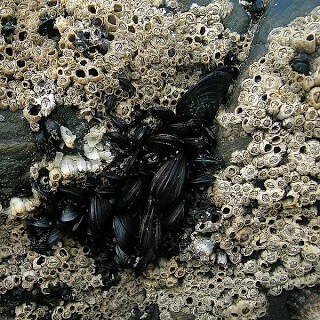Marine mussels inspire effective treatment of atherosclerosis
By: Ofir Marom

Atherosclerosis is the most common type of atherosclerosis. The disease is characterized by the thickening of the walls of the arteries following the deposition of fatty substances, such as cholesterol and triglycerides, on the walls of the blood vessels. The stratification (plaque) that accumulates on the walls of the arteries damages their elasticity, causes an inflammatory reaction and gradually clogs them, a condition that can impair normal blood supply and cause irreversible damage to the brain, heart, kidneys, limbs and other organs of the body. In addition, parts of the plaque can break free from the artery wall, creating a blockage of blood flow in another area of the body. The disease is the main cause of death in the western world.
In cases where mechanical expansion of the blood vessels is necessary, this is usually done by inflating a balloon. Most often, a stent is used, which helps to keep the blood vessels open and allow normal blood flow. In new developments of this process, balloons, or drug-coated stents, are used to treat the inflammatory symptoms and prevent plaque from re-accumulating.
So how can clam-produced glue help treat one of the most common clinical problems? Effective delivery of drugs to specific areas of the arteries is limited, due to the fact that the drugs are quickly washed away with the blood flow. Dr. Christian Kastrup, from the University of British Columbia, believes that sticking the drugs to the walls of the arteries would be the perfect solution to this problem. He plans to do this just as oysters stick to rocks or the sides of a boat, despite the strong currents around them.
The glue, or more precisely the hydrogel, is a synthetic material that mimics the qualities of oyster glue. The gel, which is mixed with drugs, is applied to the walls of blood vessels using a unique Teflon catheter. In an experiment on mice, it was found that the gel treated the inflammatory reaction caused by the plaque, and it was still in place about four months later, without blockages and without other side effects. Another notable advantage of using the sticky gel lies in lowering the risk of a stroke or heart attack, which results from the release of particles of the plaque into the bloodstream. The uniform layer of gel actually glues the plaque in place, thus preventing unwanted disintegration during the insertion of the catheter or in the subsequent period of time. Dr. Castrop hopes that in the future the sticky gel can also be used for other applications, such as preventing the spread of unwanted tumors.
The adhesive gel described here is just one of a variety of applications developed based on understanding the adhesion mechanism of marine organisms. In many fields there is a need for an adhesive material that is resistant to an aqueous environment, but is free of toxic substances. Another example can be found in the form of a material for gluing tissues to replace stitches, or a similar solution that is suitable for the wood industry and is used in the production of felts. Do you have an innovative idea for using such glue?
Source of knowledge
Published by www.biomimicry.org.il

3 תגובות
I have 2 suggestions to give them.
1. Improve the material from the oysters so that it builds slowly on its own so that it never ends. (Automatic construction of the material inside the artery)
2. Administering oral medications that fill the same type of substance that is placed in the arteries.
The idea is fantastic. What else ? The obvious question arises: how do you create a perfect coverage of the glue over the entire plaque.!!? Otherwise it will work like sticking something on peeling paint….
Want an effective treatment for atherosclerosis? Go vegan and completely avoid the presence of cholesterol in your diet. Your body produces cholesterol and it is the only good cholesterol!